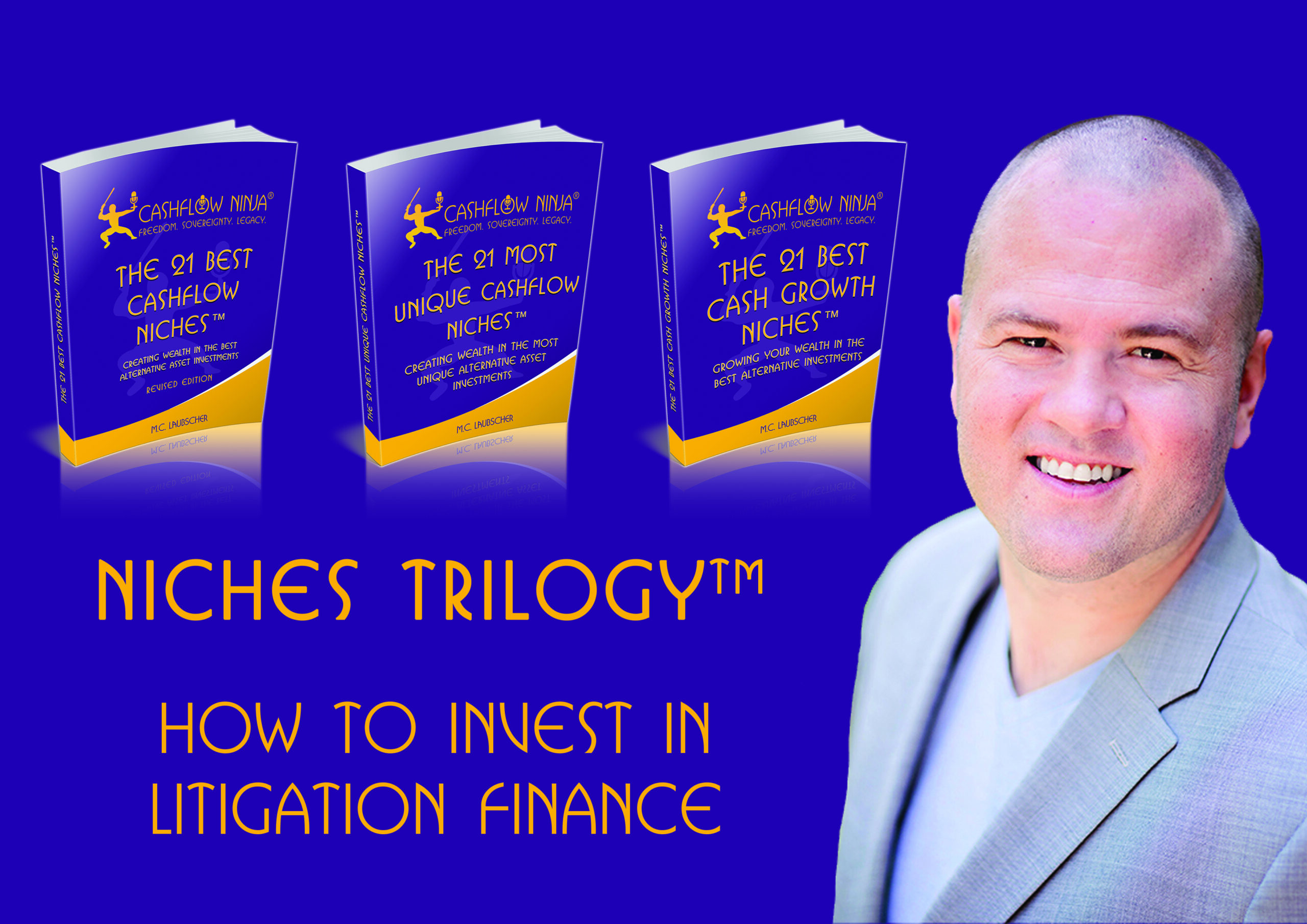
Litigation finance, or litigation funding or legal financing, is the practice where a third party provides financial resources to a plaintiff involved in litigation in exchange for a portion of any financial recovery from the lawsuit. This third party is typically unrelated to the lawsuit and does not provide traditional legal services.
The process of litigation finance involves several steps. First, litigation finance companies assess the merits of a legal case to determine its potential for success and financial recovery. If they decide to fund the case, they enter into an agreement with the plaintiff. The financing company agrees to cover legal fees and other associated costs in exchange for a percentage of the settlement or judgment.
Throughout the lawsuit, the plaintiff’s legal team handles the case. If the case is successful and there is a financial settlement or judgment in favor of the plaintiff, the litigation finance company receives a pre-agreed portion of the proceeds. It is important to note that litigation finance is typically non-recourse, meaning if the lawsuit is unsuccessful and there is no financial recovery, the plaintiff owes nothing to the financing company. The company assumes the risk of the case being unsuccessful.
Plaintiffs use litigation finance for several reasons:
- It provides access to justice for individuals or companies who lack the financial resources to pursue legal claims.
- It allows plaintiffs to mitigate the financial risks associated with litigation.
- With litigation finance, plaintiffs can focus on the case without worrying about financing legal expenses.
.Why Invest In Litigation Finance?
Investors are drawn to litigation finance for several reasons. First, it offers diversification by creating a unique asset class not tied to traditional financial markets. This makes it appealing for those looking to broaden their investment portfolios.
Additionally, litigation finance has the potential for high returns. In successful cases, the profits can exceed the initial investment amount or a predetermined settlement percentage.
Furthermore, investment decisions are often based on the merits of individual cases, allowing for a focused evaluation of risk. Unlike many other investments, economic downturns do not significantly impact litigation outcomes. This provides investors with a level of stability and security.
As litigation costs continue rising, more plaintiffs seek external funding, creating even more opportunities for investors. Lastly, the recognition and acceptance of litigation finance as a legitimate form of finance is steadily growing.
The Litigation Finance Ecosystem
Litigation finance, or legal finance, lawsuit funding, or third-party litigation funding, is a growing investment sector where capital is provided to plaintiffs, law firms, or defendants in return for a share of the financial recovery from a lawsuit.
Several vital components and players distinguish this sector. The funders, the cornerstone of this ecosystem, range from dedicated litigation finance firms to hedge funds, private equity groups, and high-net-worth individual investors. Plaintiffs and law firms are the recipients of this funding, utilizing it to cover litigation costs or maintain their operations during lengthy legal processes.
Brokers and advisors connect funders with viable investment opportunities and assist in case assessments. Legal counsel, often comprised of former lawyers or those with strong connections to law firms, is vital in evaluating the merits of cases and guiding funders.
The litigation finance industry is navigating an evolving regulatory landscape, with rules varying widely between jurisdictions.
Ethical considerations, such as potential conflicts of interest or the impact on case strategies, are subjects of ongoing discussion. Initially centered on personal injury claims, the sector now expands into commercial litigation, covering intellectual property and international arbitration areas.
Portfolio financing, where funders support law firms based on a collection of cases, is becoming more common, helping to spread risk and align the interests of funders and law firms.
The industry has faced calls for greater transparency, and in response, major players are becoming more open about their terms, fees, and operations.
Initially emerging in Australia and the UK, litigation finance is now experiencing significant growth globally, including in the United States, marking its evolution into a dynamic and influential sector.
How To Grow Cash
Litigation finance presents a distinctive opportunity for investors to merge the realms of legal proceedings and financial returns. In this field, investors can profit through various business models. In single-case funding, an investor or fund provides capital to a plaintiff or their representing law firm for a specific lawsuit, receiving a portion of the potential future proceeds.
This approach thoroughly assesses the case’s merits, possible damages or settlements, and the defendant’s ability to pay. Collaboration with legal professionals is critical to estimating the case duration and cost, with clear terms set for the funding amount and decision-making during the litigation process.
Another model is portfolio funding, where capital is extended to a law firm for a group of cases. This method diversifies risk across several cases, thus minimizing the impact of any case’s unfavorable outcome. Such arrangements also align the interests of the funder and the law firm, with ongoing monitoring enabling necessary adjustments.
Defense-side financing, though less common, involves funding a defendant’s legal expenses in exchange for a fee or reduced liability upon a successful defense. This strategy requires careful evaluation of potential liability, defense prospects, and costs, focusing on cost-saving or liability reduction.
Investors can also engage in monetizing judgments. After a successful judgment, plaintiffs can sell their award rights for immediate liquidity, bypassing the often-lengthy collection process. In this scenario, assessing the defendant’s payment capacity and adept negotiation are crucial for returns.
Post-settlement funding offers another avenue: investors provide funding to plaintiffs after a settlement is reached but before the actual payment. This strategy can yield quick returns due to the short interval between settlement and payment, with an emphasis on assessing the certainty of payment.
Lastly, law firm operations financing involves providing capital to law firms for their daily operations, expansions, or other business needs rather than directly funding cases. In these cases, the firm’s financial health, track record, and potential future earnings are closely scrutinized to determine creditworthiness, often using future earnings or case portfolios as collateral.
Each model contributes to the unique and evolving landscape of litigation finance, offering investors various ways to participate in the legal world’s financial aspects.
How To Lose Money
Investing in litigation finance, while offering unique opportunities, also carries its share of risks, and there are several ways investors might find themselves facing losses. One of the most straightforward risks is adverse legal outcomes. Legal proceedings are inherently uncertain; even cases that appear strong initially can result in unfavorable verdicts. Legal cases often take longer than expected to resolve. This ties up investment capital for extended periods and escalates associated costs, diminishing the potential returns.
Another significant risk is in the realm of due diligence. Inadequate evaluation of a case’s merits, the legal team’s capabilities, or the defendant’s financial situation can lead to investing in less viable cases with lower chances of success. The legal and regulatory landscape surrounding litigation finance is also subject to change, which could affect everything from the validity of claims to the potential returns and the very legality of litigation financing.
Ethical and reputational considerations also come into play. Litigation finance may encourage a litigious culture. Engaging in unethical practices can pose reputational risks that affect not just individual investments but also the broader reputation of the financing firm. Additionally, defendants, especially those with substantial resources, might use various tactics to prolong litigation, drive up costs, or file counterclaims, which can negatively impact the potential returns.
Settlements are another area of uncertainty. Even when a plaintiff wins a case or reaches a settlement, the final amount might be lower than anticipated, leading to reduced returns. Furthermore, winning a judgment only sometimes equates to receiving payment. Collection can become problematic if a defendant faces bankruptcy or other financial issues, potentially leading to reduced or non-existent returns.
Contractual disputes between the litigation financier and the plaintiff or law firm over the distribution of proceeds can also arise, complicating the return on investment. Lastly, in cases where litigation finance arrangements involve floating interest rates, these rates can affect financing costs and overall returns. All these factors underscore the complexities and risks inherent in litigation finance, making it crucial for investors to approach this field with a thorough understanding and cautious strategy.
Positives & Negatives of Litigation Finance
Positives:
Non-Correlation with Traditional Markets: One of the main reasons investors are drawn to litigation finance is that the returns are generally not influenced by the performance of traditional financial markets. This means that litigation investments can offer consistent returns regardless of how stocks, bonds, or real estate are doing.
Potential for High Returns: Some cases, when successful, can yield significant returns on investment, often surpassing more conventional investment avenues.
Diversification: Adding litigation finance to a diverse portfolio can lower risk and provide additional avenues for growth.
Increased Access to Justice: By funding lawsuits, investors indirectly contribute to facilitating access to justice for plaintiffs who may not have the financial means to pursue their claims.
Predictable Timeline: While the outcome of a case might be uncertain, the general timeline (although sometimes lengthy) can be reasonably anticipated. This allows investors to plan their financial commitments and expected returns.
Negatives:
High Risk: If a case is lost, investors risk losing their entire investment amount. Lawsuit outcomes are unpredictable, and even strong cases can result in a loss.
Long Investment Duration: Litigation can take years to resolve. This means that funds can be tied up for extended periods without return.
Complexity: Properly assessing the potential of a lawsuit requires a deep understanding of the law and the specifics of each case. This active investment approach often calls for specialized knowledge or reliance on experts.
Ethical Concerns: Critics argue that third-party funding can influence case outcomes, prolong legal proceedings, or encourage frivolous lawsuits. There are also concerns about potential conflicts of interest.
Regulatory and Legal Uncertainty: Litigation finance’s legal landscape is still evolving. Changes in regulations or legal precedents can impact the viability of existing and future investments.
Limited Liquidity: Unlike stocks or bonds, it is difficult to “sell” your stake in a lawsuit if you need to free up capital.
Limited Historical Data: L litigation finance has a shorter track record than other investment vehicles. This makes it challenging to assess long-term performance and risks accurately.
Investment Opportunity Filter™
The Investment Opportunity Filter™ evaluates an investment opportunity based on cashflow, tax benefits, appreciation, and the leverage it provides.
Litigation finance scores a 2/4 with The Investment Opportunity Filter™.
Litigation finance investments can increase in value significantly, allowing for leveraging others’ skill sets, capabilities, networks, and capital.
Download all the Niches Trilogy Books:
The 21 Best Cashflow Niches
Digital: https://www.
Audio: https://podcasters.spotify.
The 21 Most Unique Cashflow Niches
Digital: https://www.
Audio: https://podcasters.spotify.
The 21 Best Cash Growth Niches
Digital: https://www.
Audio: https://podcasters.spotify.
Listen To Cashflow Ninja Podcasts:
Cashflow Ninja
https://podcasters.spotify.
Cashflow Investing Secrets
https://podcasters.spotify.
Cashflow Ninja Banking
https://podcasters.spotify.
Share This
Related

840: Chris Rawley: How To Invest In Livestock
My guest in this episode is Chris Rawley. Chris is a retired Navy Reserve Captain, founded Harvest Returns in 2016 to democratize agricultural investments. During his 30-year military career, Rawley served in leadership roles across naval, expeditionary, and joint special operations units, deploying to regions such as Afghanistan, Iraq, Africa, the Middle East, and the…

839: Louis O’Connor: The Exciting Trends For Rare Earth Metals Right Now
My guest in this episode is Louis O’ Connor. Louis is the Founder, and Principal of Strategic Metals Invest. We are the only industry supplier in the world to offer private investors the option to purchase and profit from owning Strategic Metals. The investment play is exactly the same paradigm as investing in Precious Metals,…

838: Michael Cobb: How To Buy Your Home Overseas And Get It Right The First Time
Our guest today is Mike Cobb, co-founder & CEO of ECI Development and President of Gran Pacifica. Named among the “100 Outstanding CEOs in Central America” by Mercados & Tendencias, Mike left a successful career in the computer industry to pursue opportunities in the emerging real estate markets of Central America. In 1996, he co-founded…
